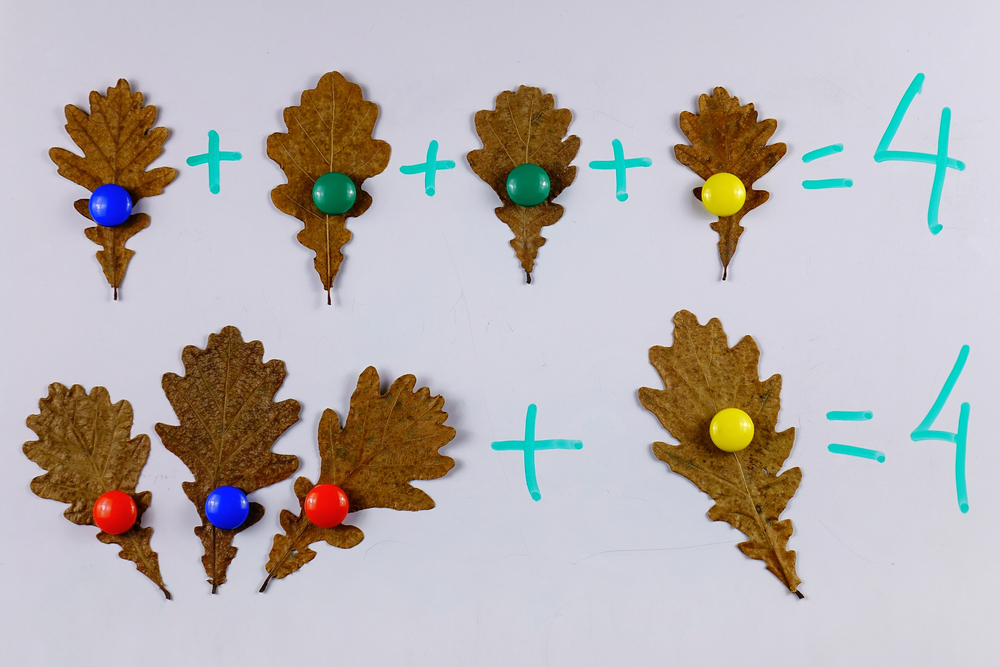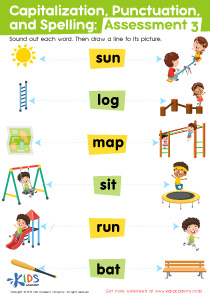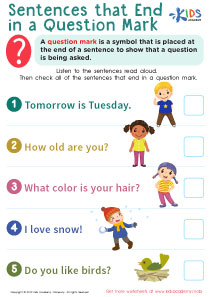Fine motor skills development Writing Worksheets for Ages 6-8
12 filtered results
-
From - To
Enhance your child's fine motor skills with our engaging Writing Worksheets for Ages 6-8! These specially designed activities foster essential hand coordination and pencil control, crucial for neat, legible handwriting. Our worksheets offer a variety of tracing, writing, and drawing exercises to boost dexterity and confidence in young writers. Perfect for classroom or home use, these worksheets align with educational standards, ensuring your child gets the best practice possible. Discover the joy of writing and set your child on the path to academic success with our fun and effective fine motor skills development resources!
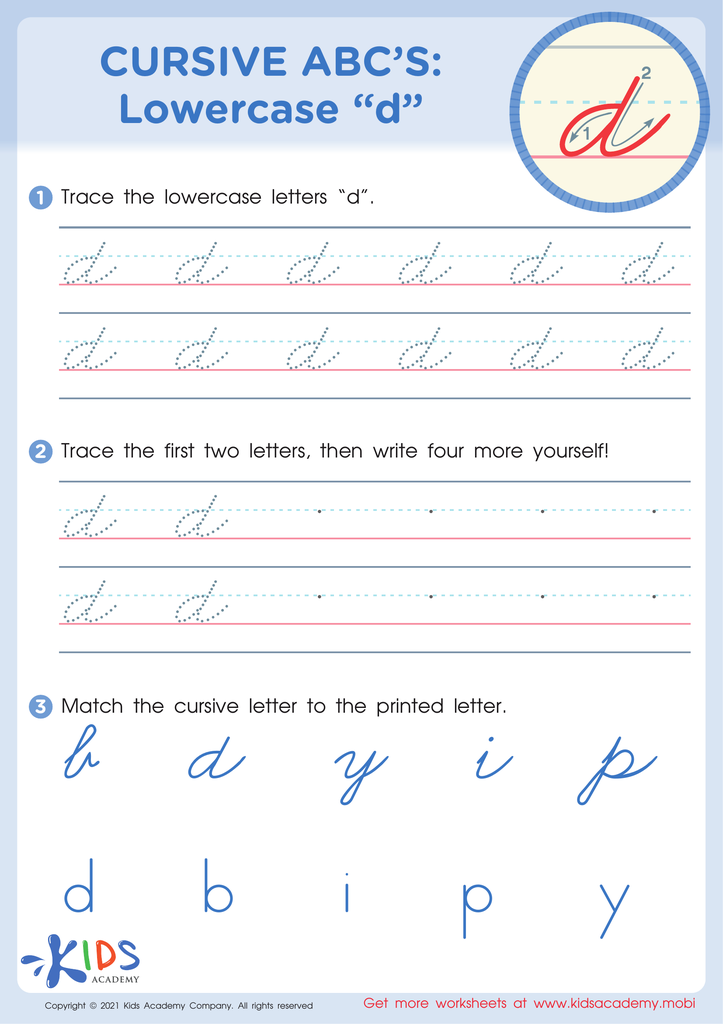

Cursive ABCs: Lowercase d
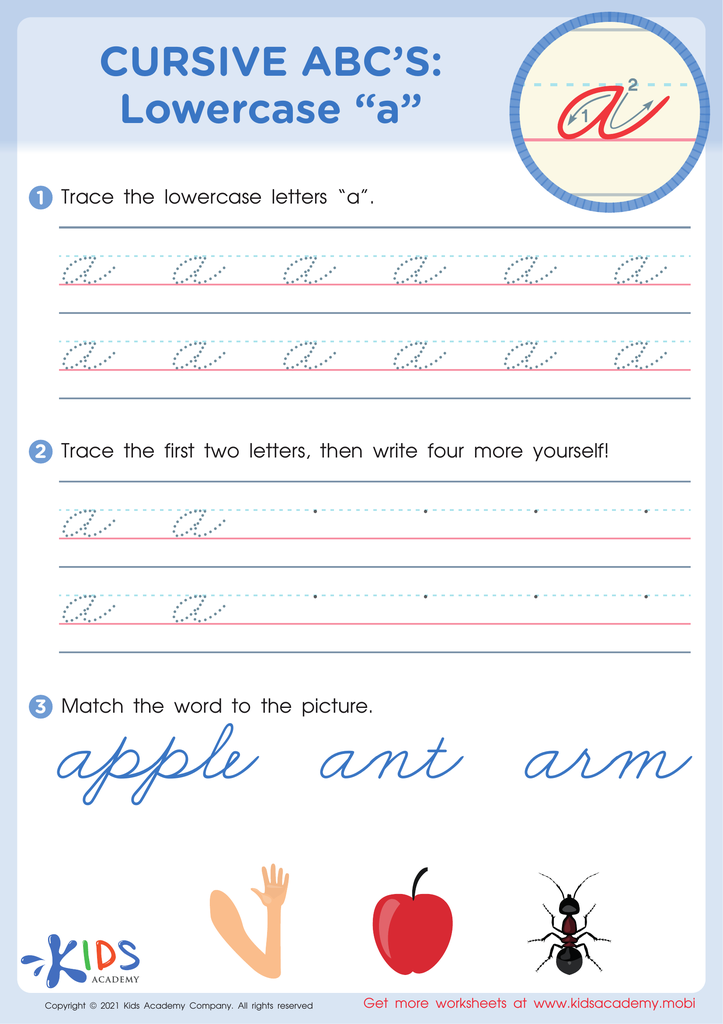

Cursive ABCs: Lowercase a
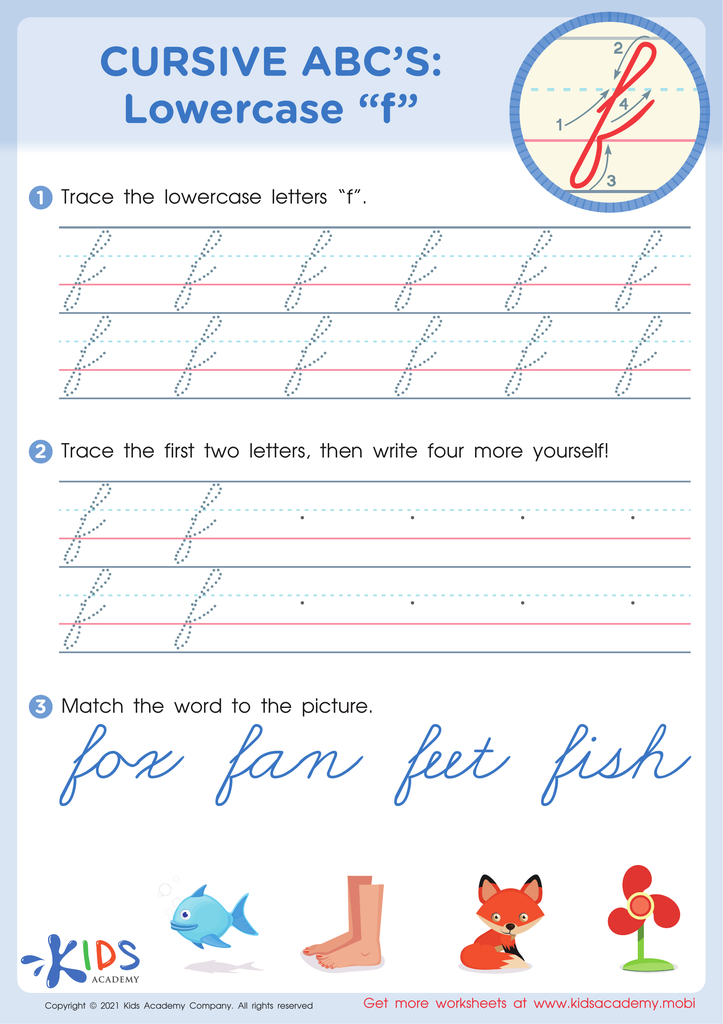

Cursive ABCs: Lowercase f
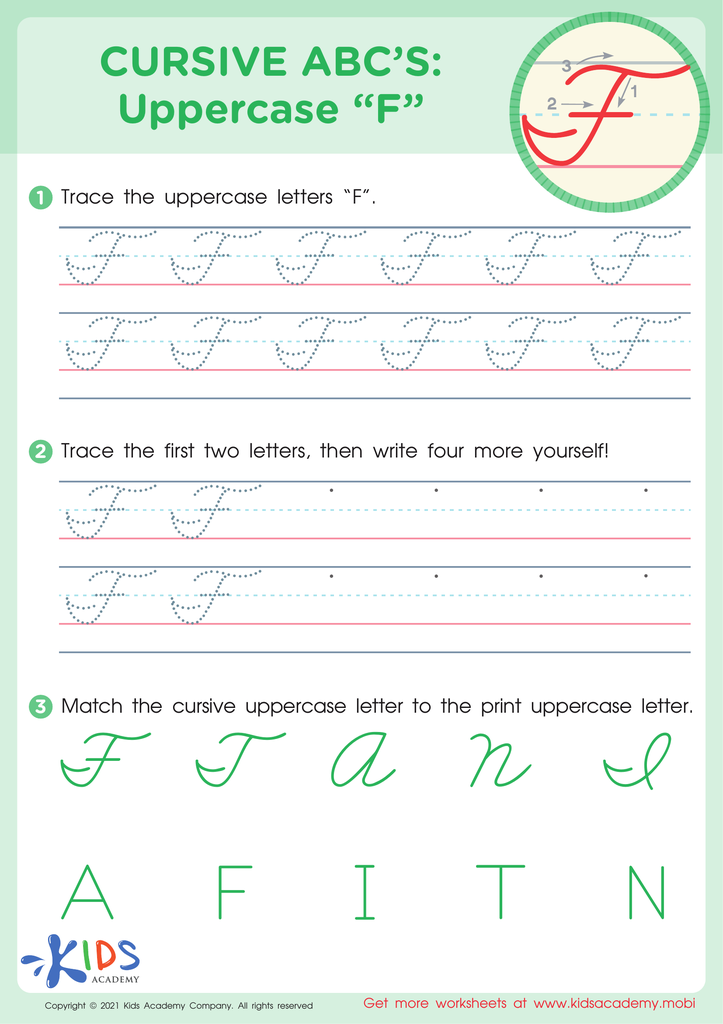

Cursive ABCs: Uppercase F
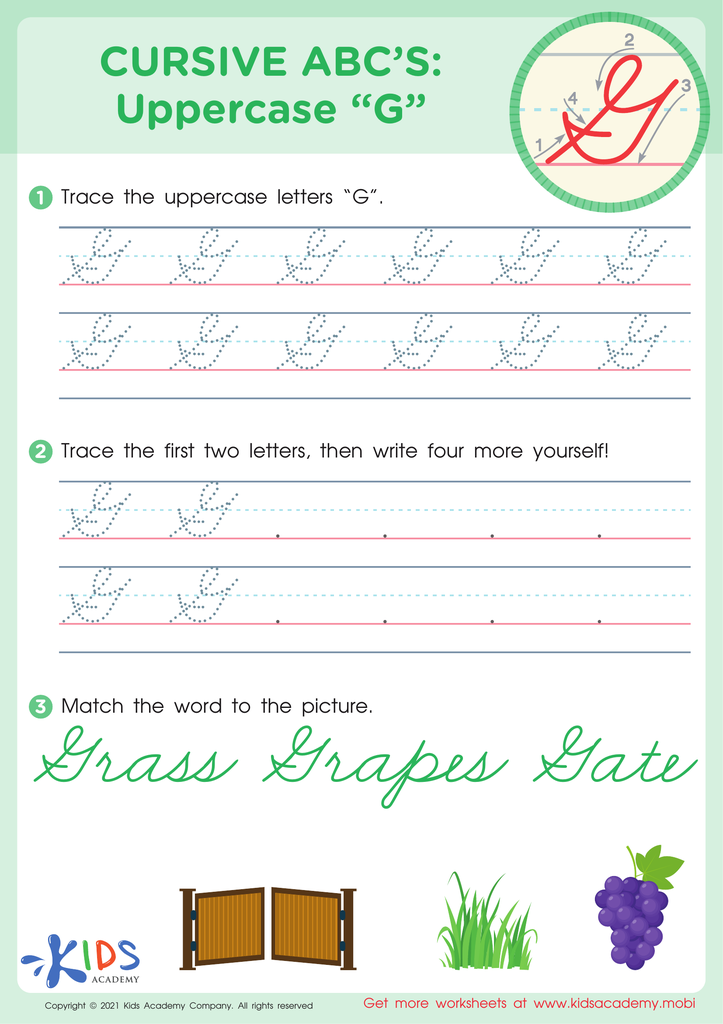

Cursive ABCs: Uppercase G
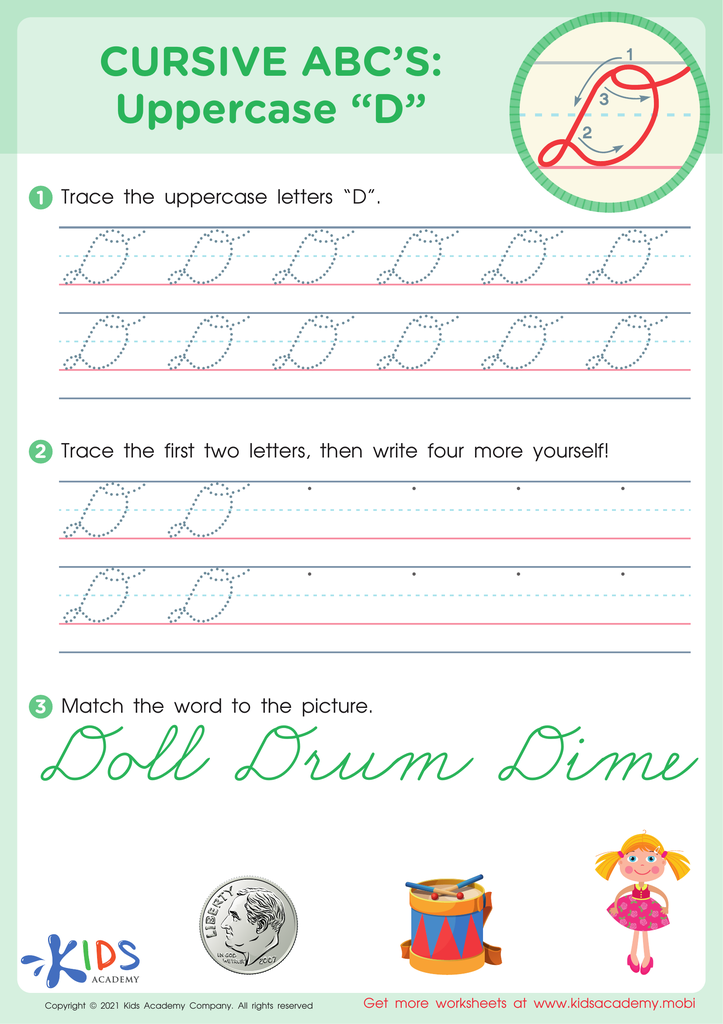

Cursive ABCs: Uppercase D
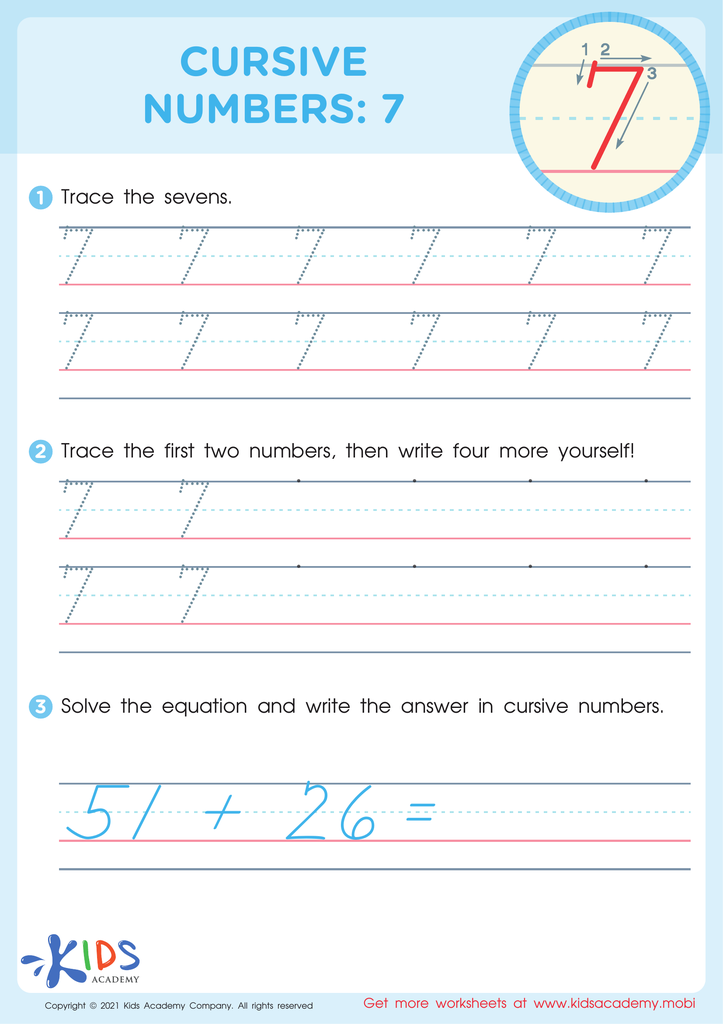

Cursive Numbers: 7 Worksheet
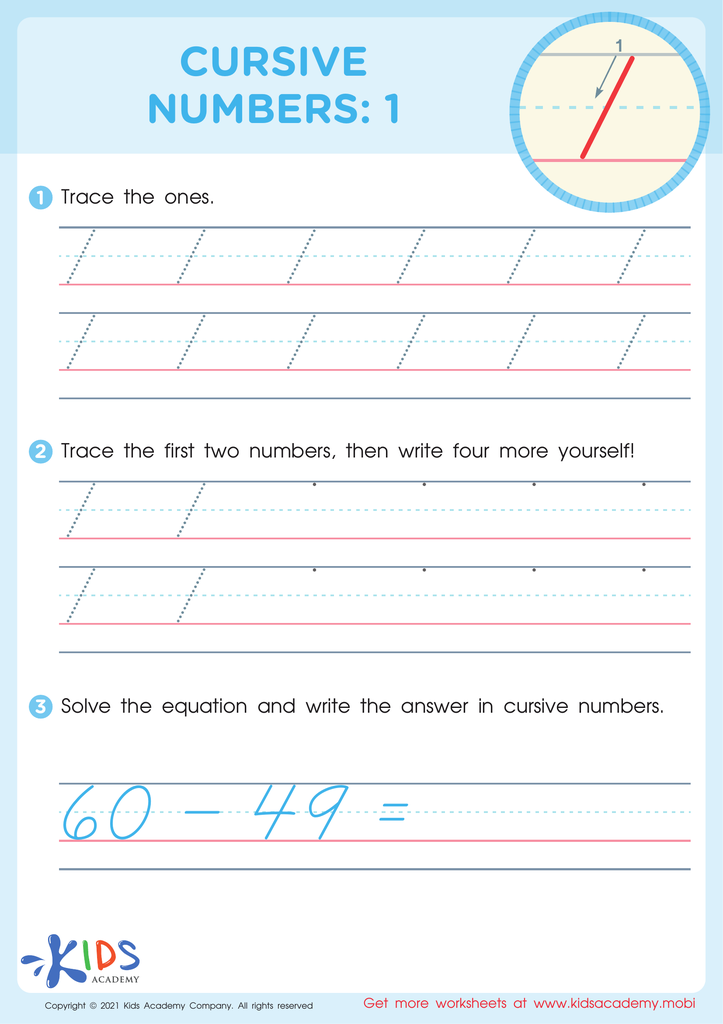

Cursive Numbers: 1 Worksheet
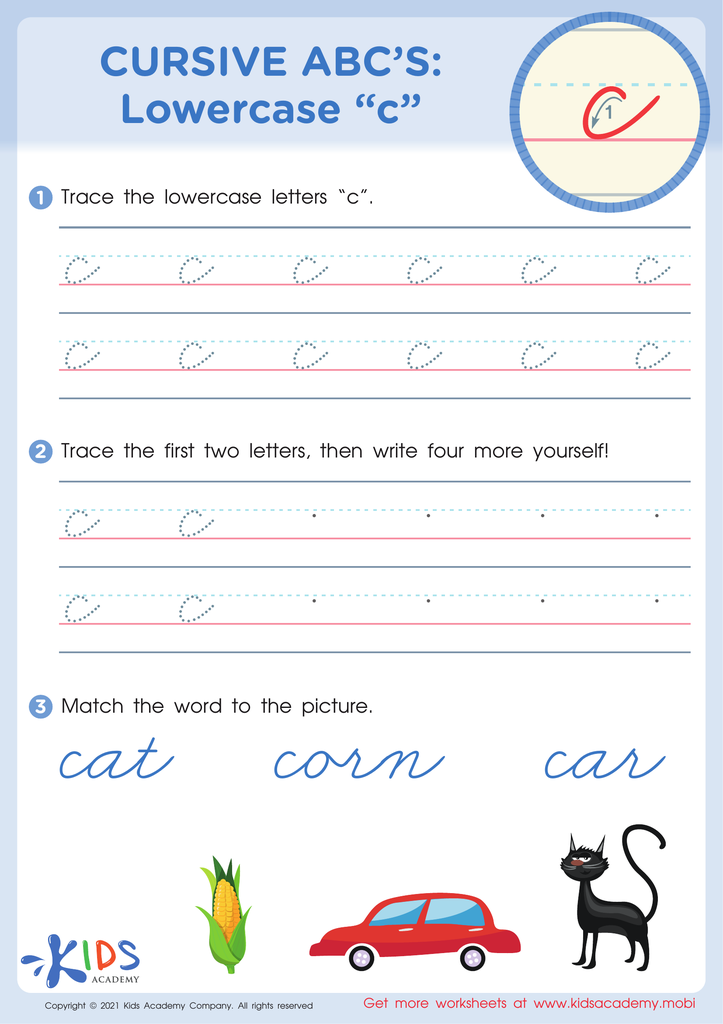

Cursive ABCs: Lowercase c


Cursive ABCs: Lowercase h
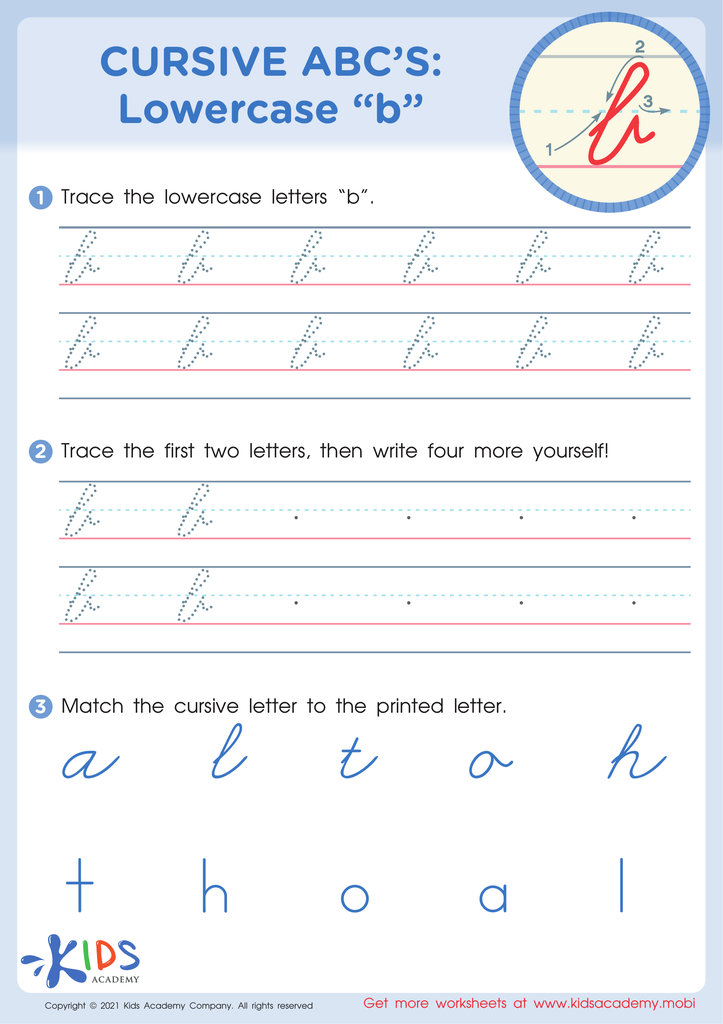

Cursive ABCs: Lowercase b
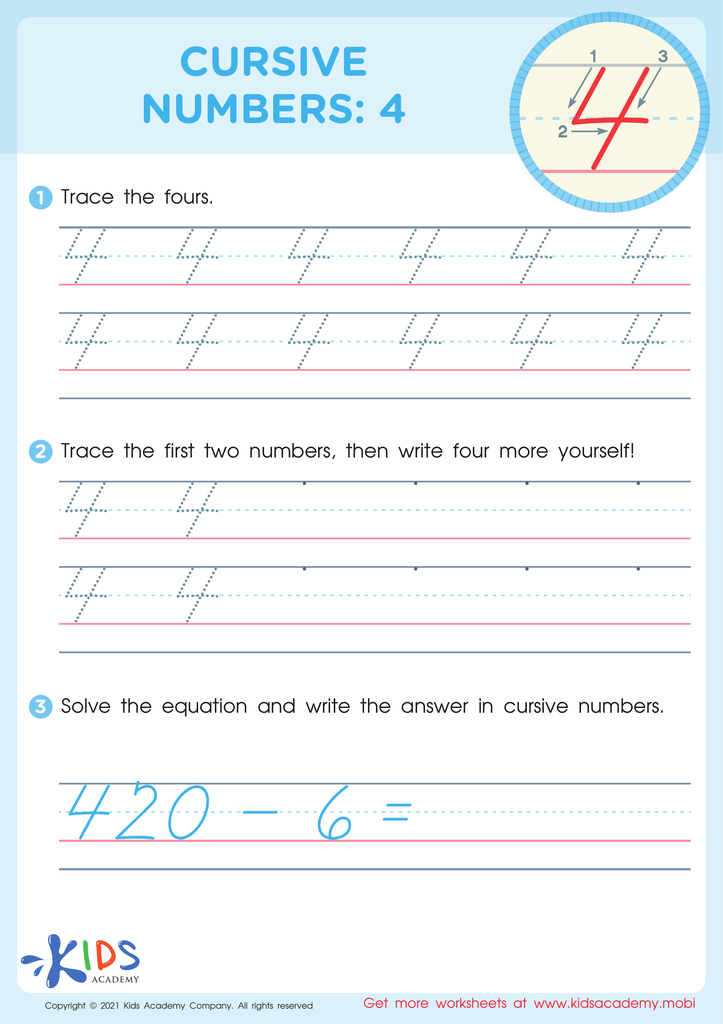

Cursive Numbers: 4 Worksheet
Fine motor skills development in writing for children aged 6-8 is crucial for several reasons. First, these skills enable children to perform essential daily tasks such as holding a pencil correctly, tying shoelaces, and using scissors, which foster their independence and self-confidence. As children progress in school, writing becomes a fundamental tool for learning. Strong fine motor skills ensure that children can write legibly and comfortably, boosting their academic performance.
Additionally, the process of developing fine motor skills helps in enhancing hand-eye coordination and precision, important for numerous activities, both educational and recreational. Engaging in activities that involve fine motor control, like drawing, cutting, and crafting can also stimulate creativity, build patience, and improve concentration.
Proper motor skills also have long-term benefits. By developing these skills early, children are better prepared for complex tasks requiring precise movements as they grow older. Plus, strong motor abilities can even influence social opportunities, allowing children to participate more fully in various physical and group activities.
Teachers and parents can work together to offer a variety of engaging, skill-building activities, from clay modeling to interactive writing exercises, to ensure children develop these important skills effectively.







